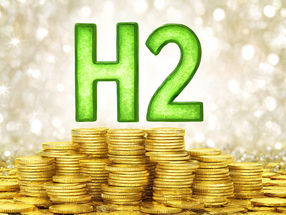2003 World Chlor-Alkali Analysis
HOUSTON -- Chemical Market Associates, Inc. recently completed the 2003 World Chlor-Alkali Analysis. This annual analysis is a multi-client market study covering world markets through 2007 for chlorine, caustic and their major derivatives. The 2003 World Chlor-Alkali Analysis evaluates supply/demand, capacity data, chlor-alkali cash costs, and price forecasts.
Energy price forecast and a detailed economic forecast are the requisite inputs needed to develop a detailed country by country analysis of the chlorine and caustic markets. CMAI analyzes supply and demand for the larger chlor-alkali end uses, which then rolls into chlorine or caustic demand. Chlorine demand will react instantly and in the same direction as economic conditions, because chlorine end uses are typically consumed in long term durable goods such as the construction of infrastructure (PVC pipe, windows, and doors, polyurethane insulation); about 55 percent of total chlorine demand is consumed in PVC and polyurethane. Caustic end uses are more diverse and caustic demand reacts more slowly to improving economic conditions. However, year-to-year changes in chlorine and caustic demand trend with each other.
According to the Consultant Team of Mary Blackburn, Marguerite Morrin, and Steve Brien, the poor margin environment that characterized the middle years during our analysis period will yield to a much improved situation during the latter part of the period. Competitive production costs and proximity to the growing Asian markets are the two key advantages for chlor-alkali producers in the Middle East, which will thrust this region into the position of the largest exporter of EDC, VCM and caustic by 2007. China continues as a key player in many different products in the chlor-alkali market. It imports more than one million metric tons of PVC, pulp and alumina and is a player in the caustic export market. Large chlor-alkali/vinyls and/or chlor- alkali/vinyls/isocyanates complexes will be competing for the ethylene molecule, as China almost doubles its ethylene capacity by 2007. Based on our current understanding of announced capacity additions and our forecast demand growth, we believe 2.2 million dry metric tons of Hypothetical Additional Capacity will be built by 2007, primarily in the Middle East and China. We believe economic criteria will determine if there will be further closures of chlor-alkali capacity, not environmental regulations.
CMAI's 2003 World Chlor-Alkali Analysis is available in book and CD-ROM format. The study covers ten regions and more than fifty countries and also includes supply/demand forecasts, technology analysis, trade, price forecasts as well as other issues that affect the chlor-alkali industry.
Most read news
Other news from the department business & finance

Get the chemical industry in your inbox
By submitting this form you agree that LUMITOS AG will send you the newsletter(s) selected above by email. Your data will not be passed on to third parties. Your data will be stored and processed in accordance with our data protection regulations. LUMITOS may contact you by email for the purpose of advertising or market and opinion surveys. You can revoke your consent at any time without giving reasons to LUMITOS AG, Ernst-Augustin-Str. 2, 12489 Berlin, Germany or by e-mail at revoke@lumitos.com with effect for the future. In addition, each email contains a link to unsubscribe from the corresponding newsletter.


























































